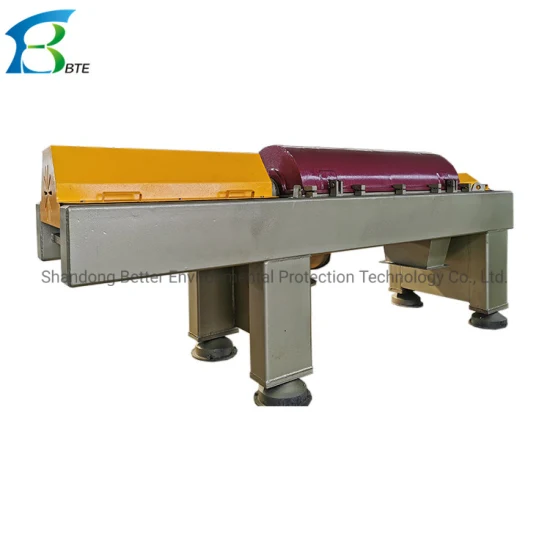10 years of experience as a food machinery equipment manufacturer
10 years of experience as a food machinery equipment manufacturer
Wastewater treatment plants face the constant challenge of efficiently processing large volumes of sludge generated during the purification process. One technology proving instrumental in handling this sludge effectively is the Horizontal Spiral Centrifuging Dewatering Machine. This equipment plays a vital role in volume reduction and cost savings within treatment facilities.

The Horizontal Spiral Centrifuging Dewatering Machine, also known simply as a decanter centrifuge for sludge dewatering, operates on the principle of centrifugal force. As the name implies, its rotating assembly (bowl and internal screw conveyor) is oriented horizontally. Sludge is continuously fed into the rapidly rotating bowl through a central inlet pipe.
Inside the rotating bowl, powerful centrifugal forces – often thousands of times greater than gravity – cause the denser solid particles within the sludge slurry to migrate rapidly towards the inner wall of the bowl. Meanwhile, the separated liquid phase, or centrate, forms a concentric layer closer to the center. A helical screw conveyor, rotating at a slightly different speed than the bowl itself, continuously scrapes the compacted solids along the bowl’s inner wall towards the conical end, known as the beach section. Here, the solids undergo further dewatering before being discharged. The clarified centrate flows out from the other end of the bowl.
The primary function of this machine is dewatering:
This dewatering process is crucial downstream of biological treatment units (like activated sludge systems) or after digesters, where large quantities of biological solids are produced.
The use of a Horizontal Spiral Centrifuging Dewatering Machine offers several tangible benefits for wastewater treatment plants:
Furthermore, achieving higher dryness can improve the efficiency and reduce the energy consumption of downstream processes if the sludge is destined for thermal drying or incineration.
The efficiency of the centrifuge also impacts the overall environmental footprint of the treatment plant. A well-operating machine producing a very clear centrate ensures that fewer solids are recycled back into the treatment process. This reduces the load on upstream biological stages, potentially enhancing their performance and stability. It also minimizes the potential release of solids into the final effluent if the centrate is recycled improperly. By enabling efficient sludge processing and disposal, the technology contributes to the ultimate goal of wastewater treatment: protecting water resources and public health.
In conclusion, the Horizontal Spiral Centrifuging Dewatering Machine is a sophisticated and indispensable component in modern wastewater treatment infrastructure. Its ability to efficiently separate sludge into a concentrated solid cake and a clarified liquid stream translates directly into significant operational cost savings, improved handling capabilities, and greater overall process control for treatment plants striving for efficiency and regulatory compliance.
